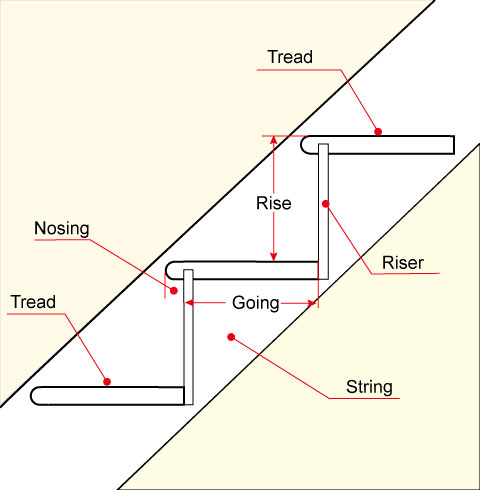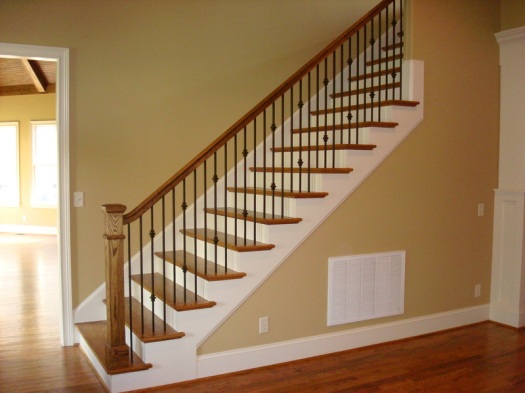
Understanding stair terminology is an important skill for any designer as we will have to describe the measurements and features of these parts which presenting a design plan to potential clients.
Tread: The top or horizontal surface of a step
Nosing: The edge of the tread projecting beyond the face of the riser and the face of a cut string
Wall String: The string of a staircase fixed flush with a wall
Closed String: A string with the face trenched to accommodate treads and risers so their profile cannot be seen
String margin: The distance between the top of the string and the pitch line measured at 90 degrees to the pitch line
Going: The going of a flight of stairs is the horizontal distance between the face of the first and last risers. The individual going of a step is measured from face of riser to face of riser and for domestic use should be a minimum of 220mm
Rise: The rise of a flight is the vertical distance between the floors or landings connected by the flight The individual rise is the vertical measurement from top of tread to top of tread
Riser: The board that forms the base of the step The maximum individual rise is the vertical measurement from top of tread to top of tread
Types of Stair

Straight Stair
This is the most widespread type of staircase especially used in homes, and despite their simplicity they are convenient and functional. General rules state that the amount of stairs within one flight of stairs should not exceed 16. The use of straight stairs are only feasible to join two levels.
Quarter Landing Stair
Quarter landing stairs represent a variety of straight stairs, which also include a landing. The landing is used to change direction of the flight of stairs by 90 degrees and also provide a resting spot for people when moving up and down them.
